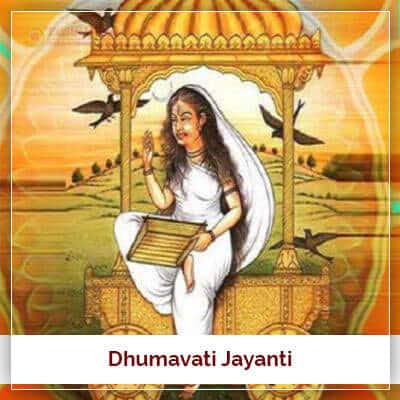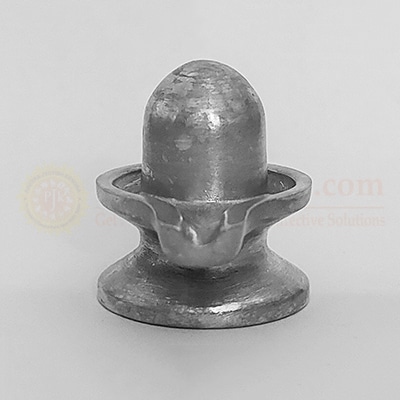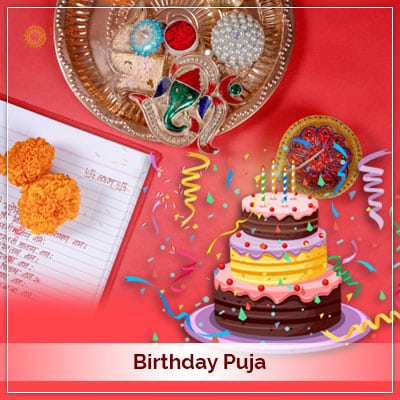Dhumavati Jayanti
Published On : April 24, 2024 | Author : Astrologer Pt Umesh Chandra Pant 
Dhumavati Jayanti And Its Importance
The supernatural frolics of gods and goddesses, as detailed in various Hindu scriptures, are deemed educational and illuminating lessons; not only for the earthly people but also for Trilok plunged in darkness. A mere appearance or understanding of the same (divine frolics) means a remedial measure to effectively put an end to the darkness galore in a person’s life. Mata Dhumavati Jayanti is thus celebrated to commemorate goddess Dhumavati and her divine appearance/incarnation to emancipate people from darkness through enlightenment. Many gods and goddesses in the Hindu religion have been quoted to have assumed incarnations respectively to tackle different sorts of problems that occurred in specific circumstances, such as slaying demons or liberating the innocents from the tyranny of evil forces. Goddess Dhumavati is one of the supreme deities of Dasha Mahavidyas (10 wisdom goddesses). In other words, she is the manifestation of a single deity called Parvati. To put it in simple words, just as water turns into vapour at high temperature or turns into a cloud or becomes solidified when dried, similarly, goddess Parvati is the supreme deity who constitutes all the divine forms of Dasha Mahavidyas.
Mata Dhumavati Jayanti is celebrated in Ashtami of Shukla Paksha in Jyeshtha month, every year. The day involves devotional songs, mantras, shlokas, and other religious rituals dedicated to the goddess Dhumavati. Devotees, in search of happiness from miseries, worship the deity. Puja and fast dedicated to goddess Dhumavati bears cosmic effects that put an end to any misery, disease and problems suffered by a person. The form of goddess Dhumavati is considered an extremely ferocious manifestation of the deity inspiring terror in the hearts of demons. This form of Mata Dhumavati is worshipped for purposes related to Tantra and Siddhi. It also grants desired boon to the devotees. Married women should not worship the goddess Dhumavati, and also ensure that they offer their prayers to the deity from afar. Dhumavati is a divine form appearing as a plume of smoke. It is believed that when Mata Sati sacrificed herself in her father’s Yajna (sacred fire), the divine form that was born out of it was called Dhumavati, meaning a deity born out of the smoke of the fire. This form of Mata Dhumavati is said to fulfil the wishes of devotees. Goddess Dhumavati, the giver of prosperity, progeny, peace, happiness and other great results, commands immense value and reverence on Dhumavati Jayanti Puja.
Puja Methods To Follow On Dhumavati Jayanti Pujan
On Dhumavati Jayanti Pujan, all the devotees must follow religious and ritualistic conduct, apart from maintaining celibacy and avoiding non-vegetarian diets. Now, collect all essential materials and keep them in order at the puja spot. On the day of commencing Puja, get up before sunrise, complete daily routines (i.e. taking bath, etc.), sit on Asana (seat), and invoke god for self-purification. Recite auspicious shloka and take the vow of puja and vrat. Worship goddess Dhumavati with devotion. Tell your wishes to the deity and request to fulfil them. The puja of Mata Dhumavati is also done on Chaumasa and Gupt Navratri, apart from the usual Dhumavati Jayanti. When the puja is done, sing prayers and conclude your worship. Beg pardon to the deity for any mistake you may have done while worshipping her.
The Story Of Mata Dhumavati
Some popular and published stories about Mata Dhumavati are as follows; once Daksha Prajapati organized a gigantic Yajna. On the ritualistic occasion, he invited all gods and goddesses to attend the auspicious occasion, except Lord Shiva, his son-in-law and the husband of his daughter, Sati (later she was reborn as Parvati). Though it was a well-directed insult to Lord Shiva, Mata Sati, however, ignored it and attended the Yajna of her father. Up to that point, Mata Sati said nothing until she saw that her husband was not offered a part in Yajna Puja, despite he being present in the group of five divinities. It was a show of apparent arrogance by her father, something that Sati couldn’t tolerate. Driven by rage and insult, she sacrificed herself to Yajna. The smoke emerging out of the burnt body of Mata Sati caused an incarnation of goddess Dhumavati, bearing a downcast and ashen feature with hairs strewn, giving out a dreadful appearance of the deity. Since then Dhumavati Jayanti is celebrated with deep devotion and reverential regard shown by the devotees.
Other Details Related To Mata Dhumavati Jayanti
Though Mata Dhumavati likes white outfits, devotees can also offer her clothes with black and smoke-like colours, and black til to please the deity. The divine form of Mata Dhumavati symbolizes the abolition of tyrants, such as those people who commit sins by wilfully disregarding gods and vandalizing sacred property (i.e. shrines, temples, etc.). Mata Dhumavati is a deity endowed with infinite supernatural power. She is the destroyer of evil natures and forces. It is merely a playful activity of the deity. Otherwise, she is endowed with the power in any form in any situation and can destroy the demons. She assumes white form. She rides a crow. She is also called a quarrelsome deity, given the world is replete with troubles. Even great sage Durvasa became indomitably powerful because of the grace and kindness of Mata Dhumavati. Similarly, sage Bhrigu and Lord Parshuram attained infinite powers because of goddess Dhumavati’s grace and kindness. Because of such nature, Mata Dhumavati is worshipped with great reverential devotion. She holds a winnowing basket in her hand. The frightening and dreadful form of deity stands for termination of demons. However, for her devotees, she is extremely generous and kind.
Also Read:
Maharana Pratap Jayanti and Shani Jayanti

























